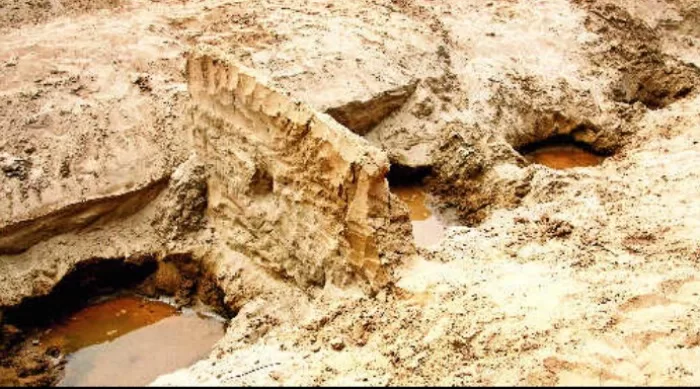The lost Saraswati River

Binay Gupta –Delhi
The most powerful rivers in the Rig Veda and the epic Mahabharata, Saraswati originated from the Bandarpunch glacier in Garhwal, flowing past Adi Badri and traversing Punjab, Haryana, and Rajasthan before reaching the sea at the Gulf of Khambhat in Gujarat around 28000 years ago. Scientific data and new evidence converge on the understanding that between 3000 and 2000 BCE (about 4,000 years ago), the river’s demise began when Sutlej diverted from the present-day Ghaggar-Hakra valley to join the river Beas. By around 3792 BP (c.1800 BCE), the river had completely dried up.The mystery surrounding the Lost River Saraswati has intrigued scholars for more than two centuries, prompting numerous investigations. Their efforts aimed to identify the Saraswati River and its major distributaries, and map them accurately to understand the evolutionary aspects of the river system. Over two centuries of scientific and geomorphological studies, when juxtaposed with archaeological data from explorations in the 1940s and 1950s, have helped establish the significance of the Saraswati River system in the region’s civilisational development.

Described as one of This scientific evidence, when corroborated with archaeological data, offers a fresh perspective on the historical significance of the river system.
The drying up and disappearance of the river have gained popular attention, generating interest in its potential revival in the 21st century, thousands of years after its disappearance. Many state governments and agencies are working on reviving the ancient Saraswati river system, which has given birth to civilisations. However, it is very disappointing to see that absolutely nothing is being done to protect the ultimate markers of this glorious past – the archaeological sites on the dried banks of the Saraswati River. Whether due to hypocrisy or sheer ignorance, the archaeological heritage of this river system is rapidly vanishing. Although technology and science can bring the river back to life, the glorious past we keep referring to will be lost forever.
Despite various politically driven narratives, there is undeniable evidence of a major river’s existence some 28,000 years ago, which served as a powerful conduit between the Indus River system in the west and the Ganga River system in the east. Today, remnants of the Saraswati River are represented by the Ghaggar-Hakra river, flowing along the pale channel of the former in the north-western part of Haryana and Rajasthan, extending into the Bahawalpur region of Pakistan.






